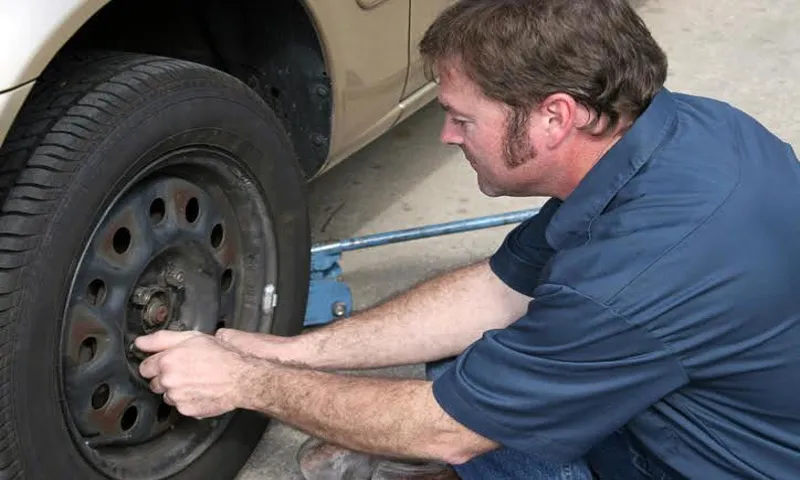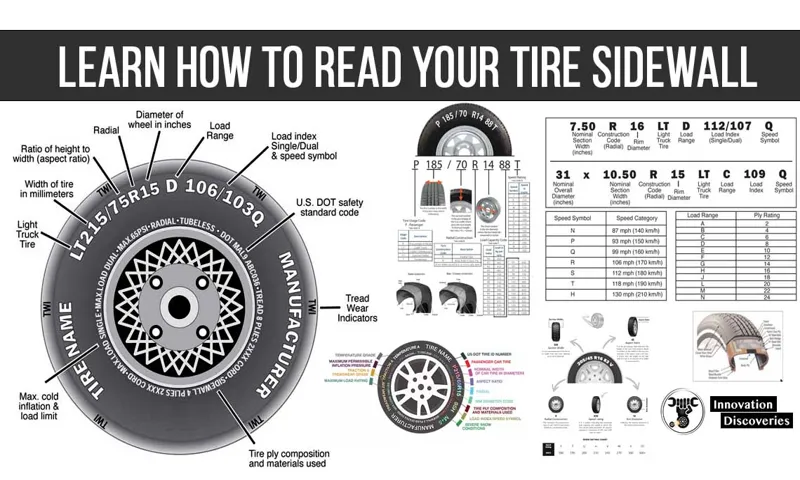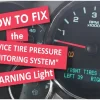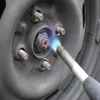As you cruise down the road, your car’s tires keep you firmly planted on the ground, allowing you to maintain control even at high speeds. But have you ever wondered what holds your car’s tires in place? It’s easy to take this crucial mechanism for granted, but understanding how it works can give you a newfound appreciation for the engineering behind every vehicle. In this blog post, we’ll explore the different parts and systems that work together to ensure your tires stay connected to your car, no matter what conditions you encounter on the road.
So buckle up and get ready to become a tire expert!
Table of Contents
Introduction
If you’re wondering what holds the tire on a car, the answer is simple: the wheel! The wheel is made up of several components, including the rim, the spokes, and the hub. The rim is the outermost part of the wheel that holds the tire in place. The spokes connect the rim to the hub, which is the central part of the wheel that attaches to the car’s axle.
The hub rotates with the axle, which powers the car’s movement. The wheel is secured to the car using lug nuts, which are screwed onto studs that protrude from the hub. It’s important to properly tighten the lug nuts to ensure that the wheel stays securely in place while driving.
Understanding the Importance of Tire Safety
Tire safety is a crucial aspect of driving that is often overlooked. It is essential to understand the importance of tire safety to ensure safe and smooth journeys. The tires are the only point of contact between your vehicle and the road.
Therefore, they play a vital role in providing stability, steering, braking, and accelerating. Neglecting tire maintenance can lead to accidents, increased fuel consumption, and higher maintenance costs. To prevent these situations, it is important to keep your tires in good condition.
In this blog section, we will discuss the importance of tire safety, how to ensure tire safety, and the consequences of neglecting tire maintenance. So, fasten your seatbelts, and let’s get started!

Explaining the Basic Parts of a Wheel and Tire
When it comes to understanding the basic components of a wheel and tire, it can be confusing to decipher all the parts involved. However, with a little bit of knowledge, anyone can identify the crucial parts that make up the wheel and tire assembly. The three key components of a wheel and tire are the rim, tire, and valve stem.
The rim is the circular metal component that connects to the hub of the wheel. The tire is the rubber covering that covers the rim and provides the vehicle with traction and shock absorption. Lastly, the valve stem is the protruding component that allows air to be pumped into the tire and regulates the tire pressure.
By recognizing these three fundamental parts, it’s possible to understand how the wheel and tire work together to drive a vehicle smoothly and safely on the road.
Answering the Question: What Holds the Tire on a Car?
If you’re wondering “what holds the tire on a car”, the answer is a combination of factors. The first is the wheel assembly, which includes the hub, the rim, and the spokes (if it’s a spoked wheel). The hub is the part that attaches to the car, and it has studs or bolts that hold the rim in place.
The rim, in turn, holds the tire by means of a bead, which is a ring of steel wire coated with rubber that wraps tightly around the edges of the rim. In addition to these mechanical connections, the tire is also held on by the air pressure inside it, which presses it firmly against the rim. This is why it’s so important to maintain proper tire pressure, as too little pressure can cause the tire to slip off the rim, while too much pressure can cause it to explode.
So, in short, what holds the tire on a car is a combination of metal, rubber, and air pressure, working together to create a safe and reliable connection.
Discussing the Role of Lug Nuts and Bolts in Securing the Wheel
Lug nuts and bolts play a crucial role in holding the tire on a car. Without them, the wheel can easily slide off while driving, which can cause a serious accident. Both lug nuts and bolts work as a team to secure the wheel to the hub assembly.
Lug nuts are the hardware that keeps the wheel in place. They are typically tightened using a torque wrench to achieve the right amount of torque. Bolts, on the other hand, are fasteners that hold the lug nuts in place.
They are threaded into the hub and require a specific amount of torque as well. If either the lug nuts or bolts become loose, it can lead to a catastrophic failure. That’s why it’s important to check the tightness of the nuts and bolts periodically to prevent wheel detachment.
In summary, lug nuts and bolts are the unsung heroes of tire safety, providing the necessary security and stability for a safe and enjoyable driving experience.
Explaining the Functions of the Wheel Studs and Hubs
If you’ve ever wondered what holds the tire on a car, the answer lies in the wheel studs and hubs. These two components work together to ensure that your tires stay securely attached to your car while driving. Wheel studs are long bolts that protrude through the hub and extend to the backside of the wheel.
They are secured in place by the hub of the wheel, which is the central part that connects the wheel to the car’s axle. The wheel studs and hubs are carefully engineered to be strong enough to withstand the weight and pressure of the car’s movement while also working to prevent your tires from wobbling or detaching. It’s essential to keep these components in good condition and properly tightened to avoid accidents and potential damage to your car.
Understanding how your car’s wheel system works will enable you to ensure its safety and longevity.
Highlighting the Significance of Proper Torque for Wheel Fasteners
Proper Torque for Wheel Fasteners Have you ever wondered what keeps your car’s tires firmly in place? The answer is proper torque for wheel fasteners. Torque refers to the amount of force used to tighten the lug nuts that secure the wheels to your car’s hub. Without the proper amount of torque, your wheels can easily come loose or even detach while driving, leading to potentially catastrophic consequences.
The significance of proper torque for wheel fasteners cannot be overstated. It not only ensures the safety of passengers and fellow drivers on the road, but also prevents damage to your car’s wheels and other components. The recommended torque specification for your vehicle’s lug nuts can usually be found in the owner’s manual or on a sticker located on the inside of the driver’s side door.
However, applying the correct amount of torque is not as simple as tightening the lug nuts as much as possible. Over-tightening can lead to warped brake rotors or even cause the stud or bolt to snap off. Under-tightening, on the other hand, can result in wheel wobbling and eventual detachment.
In conclusion, proper torque for wheel fasteners is crucial for the safety and longevity of your car’s wheels and other components. It is important to follow the manufacturer’s recommended torque specifications and use a reliable torque wrench to ensure the accurate amount of force is applied. So, next time you go for a drive, you can drive with confidence knowing your car’s wheels are securely fastened in place.
Additional Tips on Maintaining Proper Wheel and Tire Safety
When it comes to maintaining proper wheel and tire safety, one of the most important things to consider is what holds the tire on a car. The answer to this question can be found in the lug nuts, which literally hold the wheel onto the car’s hub. It’s essential to make sure these nuts are tightened to the appropriate torque specification, as loose or improperly torqued lug nuts can cause serious problems on the road.
In addition to checking the lug nuts regularly, it’s important to perform routine tire maintenance, such as checking the air pressure and inspecting the tread for signs of wear or damage. By keeping these simple tips in mind, you can help ensure that your wheels and tires are safe and reliable, no matter where the road takes you.
Emphasizing the Importance of Regular Wheel and Tire Inspections
Regular wheel and tire inspections are essential to maintaining proper safety on the road. Worn-out tires can lead to dangerous accidents, which is why it’s important to check the tire pressure at least once a month and examine the treads for wear and tear. Additionally, it’s imperative to keep your wheels properly aligned and balanced as unbalanced wheels can cause a bumpy ride and decrease fuel efficiency.
Another tip to maintain proper wheel and tire safety is to rotate your tires every 6,000-8,000 miles to ensure even wear and prolong their lifespan. Furthermore, driving habits can also impact the life of your tires, such as avoiding sharp turns and sudden stops. By following these tips, you can ensure proper safety on the road and prevent any incidents caused by worn-out tires or unbalanced wheels.
Providing Guidelines for Proper Tire Inflation and Maintenance
Maintaining proper wheel and tire safety is crucial to ensure your vehicle functions optimally, and you stay safe on the road. In addition to following regular maintenance practices like checking air pressure and rotating tires, there are some additional tips that can help you prolong the life of your wheels and tires. For starters, avoid overloading your vehicle, as this puts extra strain on your tires and can result in uneven wear.
Additionally, try to stay on paved roads as much as possible and avoid driving over curbs or rough terrain, as this increases the likelihood of damage to your tires. It’s also important to keep an eye out for any signs of damage or wear and tear, like bulges or cracks, and address them immediately to prevent further damage and risk of a blowout. By following these guidelines and incorporating them into your regular maintenance routine, you can help ensure your wheels and tires are performing at their best and keep yourself and your passengers safe on the road.
Conclusion
So, what holds the tire on a car? It’s not magic, although it can seem like it sometimes. No, it’s the good old-fashioned wheel lug nuts. These simple yet essential components keep your tires securely in place, ensuring a smooth and safe ride.
Think of them as tiny superheroes, quietly doing their part to protect you on the road. And just like a trusty sidekick, you might not even notice them until something goes wrong. So, next time you’re cruising down the highway, take a moment to appreciate those unassuming lug nuts – they’re small but mighty!”
FAQs
What is a lug nut?
A lug nut is a fastener that secures the wheel to the car’s hub.
How many lug nuts are on a typical car tire?
A typical car tire has four, five, or six lug nuts, depending on the model.
What size socket wrench do I need to remove a lug nut?
The size of the socket wrench needed to remove a lug nut varies depending on the car, but it is typically between 17mm and 22mm.
Can lug nuts become stripped or damaged?
Yes, lug nuts can become stripped or damaged, which can make them difficult to remove or cause them to fail during use.
Are lug nuts standardized across different car models?
No, lug nuts come in many different sizes and shapes, and they are not standardized across different car models.
What is a locking lug nut?
A locking lug nut is a specialized type of lug nut that requires a special key tool to remove, which makes it more difficult for thieves to steal wheels.
Can lug nuts be reused after being removed?
It is generally recommended to replace lug nuts after they have been removed, as they may become worn or damaged over time and could fail during use.



